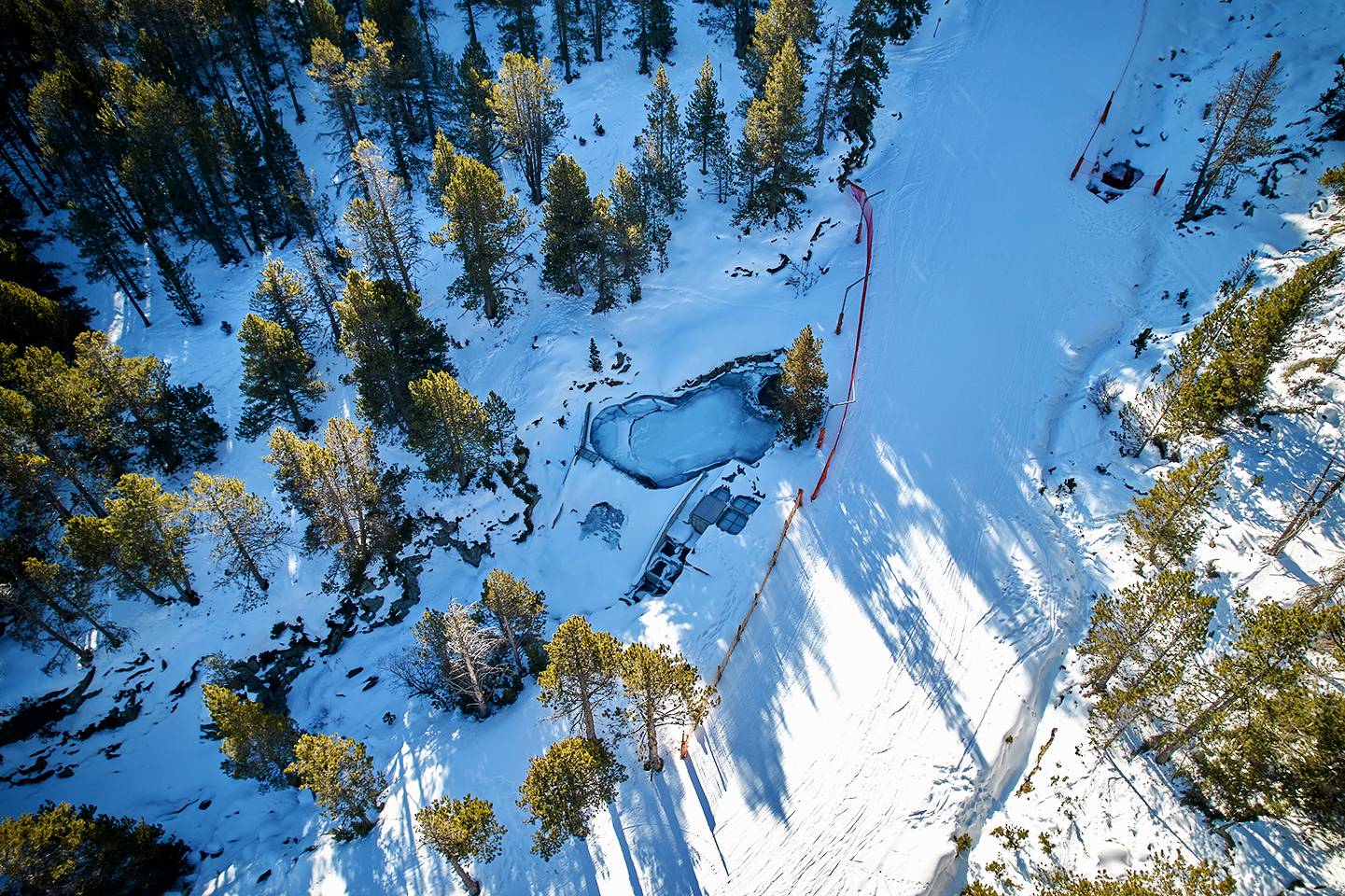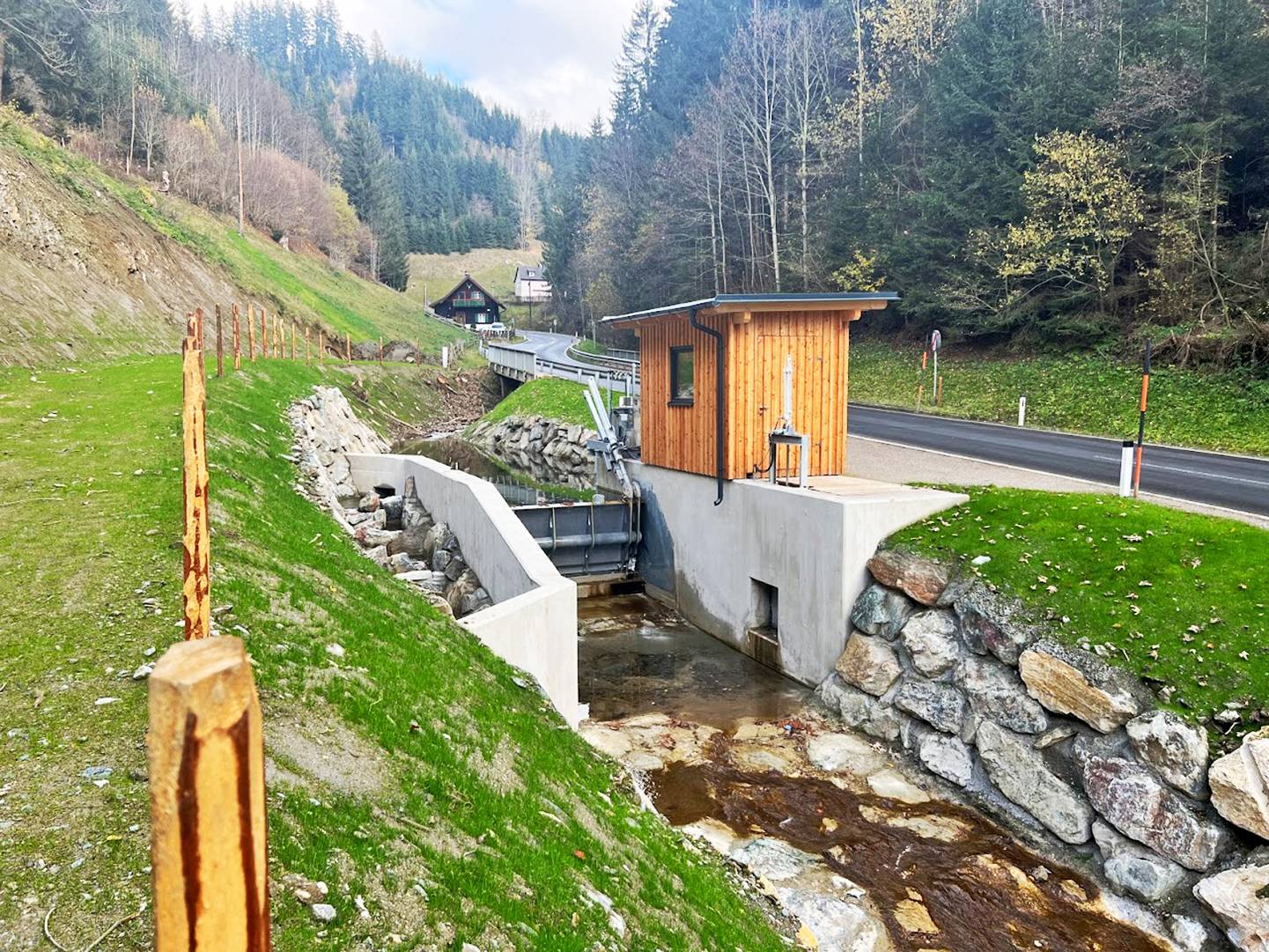Convincing Austrian technology for Japanese small-scale hydropower plant operators5 min read
Lesedauer: 4 MinutenStocker Technik GmbH from Lechtal in Tyrol is an all-round small-scale hydropower plant building specialist that successfully completed its first project far away in Japan last spring.
The manufacturer supplied the new plant, around 50km from the country’s capital city of Tokyo in the prefecture of the same name, with all requisite electromechanical infrastructure and control technology. CEO Peter Stocker also supported the plant operators in the planning of the water catchment and powerhouse solutions. A self-cleaning Coanda-rake was installed on the weir of the diversion power station and electricity is produced by a robust 2-jet Pelton turbine with a bottleneck capacity of a 55 kW. The 7-month building phase was concluded just before the power station went online in mid-April. An online link-up enables electricity production to be monitored remotely from Austria around the clock.
The major meltdown at Fukushima power station in 2011 triggered a serious Japanese energy policy rethink and a powerful swing towards the use of renewable energy resources. This also affected the expansion of the wind power infrastructure, and particularly the use of photovoltaic systems. However, progress in the hydroelectric sector has been relatively sluggish. This can be explained by the fact that the expansion potential for large-scale hydroelectric plants, which contribute around 10% of Japan’s overall energy output, has been exhausted. Furthermore, the density of small-scale hydropower stations producing under 1000 kW for an island nation of 127 million inhabitants is relatively low.
Coanda rake attracts interest
In spring 2018, in contrast to this trend, a Japanese construction company went online with a new small-scale hydropower plant around 50 km outside the Japanese capital, Tokyo. The operators have absolute faith in the expertise and technical infrastructure offered by the Austrian company Stocker Technik GmbH. Over the past few years, this new business from Lechtal in Tyrol has been able to establish an excellent reputation in cable-car technology and as an A-Z supplier of infrastructure for small-scale hydropower plants. “We first made contact with the customer at the annual hydropower trade fair ‘Renexpo Interhydro’ in Salzburg in November 2016. Initially, their interest was attracted by our self-cleaning Coanda protective rake system”, explained CEO Peter Stocker. Once the small-scale hydropower plant operators had convinced themselves of the expertise provided by the Lechtal company, by visiting a number of their plants operating in Tyrol, last September an order was placed for the provision of the plant’s entire hydroelectric infrastructure.
Tips from the turbine builders
After having manufactured and delivered all the hard and software, the Austrians were also called upon to provide advisory support with the planning of the powerhouse and the weir. In this function, Stocker drafted concrete proposals for the implementation of a water catchment system, desander and the design of the powerhouse. The operators used these guidelines as the basis for their own detailed plans, and for the installation of the plant components. The 200 m pressurised plastic DN300 pipeline was also installed by the customer’s own building company. The implementation phase, including above and below-ground structural work, was completed within just a few months.
Self-cleaning protective rake
Installation of the Coanda rake, 2 m across and 1 m high, was also conducted by the customer. The protective rake’s built-in shear-off system enabled the operators to forgo the installation of a special rake cleaning system for the water catchment set-up. Larger items of debris, such as stones, branches and leaves, are automatically rinsed out over the rake field. Moreover, the minimal size of the gaps in the fine rake prevents the passage of sediment with a diameter of more than 1 mm. Fine sediment is ultimately collected in a desanding and stilling basin located around 50 m from the Coanda rake. The manually operated rinsing protection system ensures the collected sediment can, if necessary, be released into the natural flow of the watercourse. The water level is measured via a sensor in the basin, triggering signals to the controls of the turbines in the powerhouse.
Efficiency at full and partial capacity
The horizontal Pelton turbine with a gross head of 90 m is combined with a full capacity flow rate of 65 l/s for the production of electricity. The power unit is fitted with two electrically driven jets and can generate bottleneck output of up to 55 kW at maximum water throughput. Using a single jet, the robustly-constructed turbine can also achieve impressive results in the partial capacity ranges when little water flows during the dry months. Stocker has also supplied a German-made asynchronous generator connected directly to the turbine shaft as an energy converter. Like the turbine itself, the air-cooled generator rotates at 1,010 rpm and is designed to produce an apparent power rating of 65 kVA. In an average year the power station is capable of producing around 300,000 kWh of electricity, all of which is fed into the public mains grid operated by TEPCO.
Remote control centre in Austria
The CEO himself, Mr. Stocker, made his furthest journey from the company so far, way out east – and that twice – to oversee the installation of the ‘water-to-wire’ project. The commencement of work just before Christmas 2017 involved pre-assembly of the turbine housing, and placement of the walls and pipe routing. Subsequent to installation of the electrotechnical infrastructure the power station was hooked up to the internet and ultimately went online in mid April. As well as stressing the importance of efficient, fully automated electricity production, the plant operators were also keen to guarantee a comprehensive range of remote control options for the power station. Stocker met the challenge by installing their own well-proven control technology solution. Whenever faults occur they can be detected by electronic sensors. The control software automatically passes on the signal to the people at Stocker in Austria, who are responsible for remote online digital surveillance. Peter Stocker, having overseen the successful commissioning of the plant, is very positive about the company’s achievements, and the Tyrolean entrepreneur is already working on another small-scale hydropower project in Japan.
Share:


